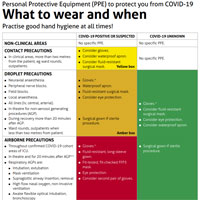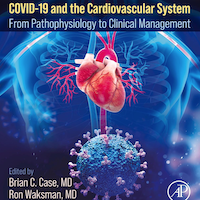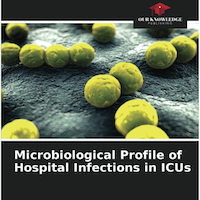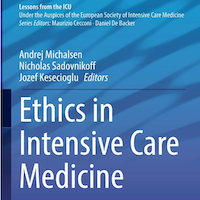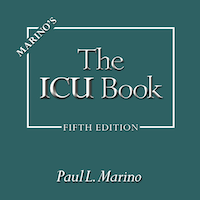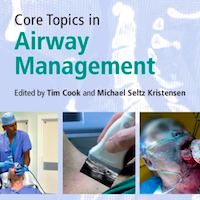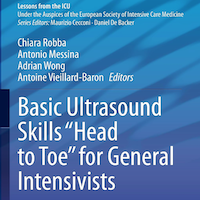Tag: coronavirus
Richard Lehman’s COVID-19 Reviews
Between the asymptomatic cases and those in intensive care, there are hundreds of thousands suffering with covid-19. They have a constant painful cough, which prevents sleep. They cannot breathe properly and are intensely... read more
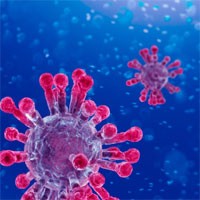
Cardiologists Join COVID-19 Front Line in Converted Cardiac ICUs
The Mount Sinai Health System in New York is one of many systems in the U.S. that has been adapting in the attempt to care for the influx of patients with known or suspected COVID-19. As elective surgeries are no longer... read more
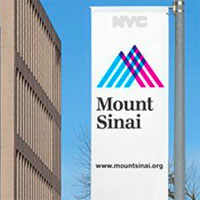
U.S. May Get More Ventilators But Run Out Of Medicine For COVID-19 Patients
As hospitals across the country fill with COVID-19 patients, medical personnel are sounding the alarm about shortages of drugs essential to those patients' care. "We have seen an increase in demand on pharmaceuticals that's... read more

COVID-19: Protected Code Blue
The protected code blue is designed to keep your staff safe when managing a patient with COVID-19 who has a sudden cardiac arrest. You will continue to do high quality CPR, defibrillation (if indicated), give code medications,... read more
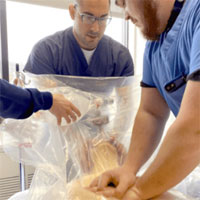
COVID-19 Evolving Indications for Intubation
Hypoxemia and tachypnea should not be the sole indications for intubation, but rather a complete clinical assessment including work of breathing, mental status and increasing PaCO2 and/or acidosis. Based on experience... read more
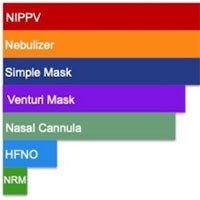
A Brooklyn ICU Fights for Each Life in a Coronavirus Surge
Nearly every patient was on a ventilator. Some were in their 80s, some in their 30s. Medical workers were falling fast and had to be resourceful — "the alternative," one said, "is death." The night had been particularly... read more

BCG Vaccination Might Protect Healthcare Workers Against COVID-19
Australian and European researchers are testing if the Bacille Calmette-Guerin (BCG) vaccine, introduced in the 1920s to fight tuberculosis, will be deployed to combat COVID-19, the respiratory disease caused by the novel... read more

US Betrays Healthcare Workers in Coronavirus Disaster
The handling of the COVID-19 pandemic in the United States will go down as the worst public health disaster in the history of the country. The loss of lives will make 9/11 and so many other catastrophes appear much smaller... read more

Influenza: The Hundred-Year Hunt to Cure the Deadliest Disease in History
A veteran ER doctor explores the troubling, terrifying, and complex history and present-day research of the flu virus, from the origins of the Great Flu that killed millions, to vexing questions such as: are we prepared for... read more
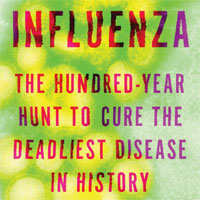
Rationing of Critical Care and Ventilators in COVID19
In many hospitals ventilators have become a scarce or non-existent resource in the face of the COVID19 pandemic. We need a ethical structure to allocate ventilators and other scarce resources. ... read more

Introduction and Dressing for COVID-19
Internal Medicine Rapid Refreshers is a series of concise information-packed videos refreshing your knowledge on key medical issues that general practitioners may encounter in their daily practice. The first episode introduces... read more

Plasma Transfusion Shows Promise for COVID-19 Treatment
Donor blood plasma from people who have recovered from COVID-19 appears to work as a treatment for the virus, a new analysis has revealed. In this preliminary uncontrolled case series of 5 critically ill patients with... read more
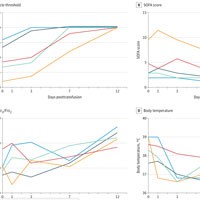
A Better Way of Connecting Multiple Patients to a Single Ventilator
This differential multi-ventilation setup yields increased safety, monitoring and control for each connected patient. In an ideal world, no one treating patients with Acute Respiratory Distress Syndrome (ARDS) would have... read more
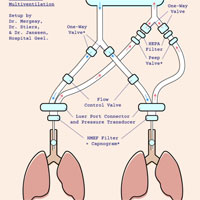
Chinese Frontline Anesthesiologists Share COVID-19 Treatment Experience
Anesthesiologists are crucial in the treatment of COVID-19 patients, with their role encompassing anesthesia, intensive care, pain treatment and more. The job is of high risk, with medical staff at risk of getting infected... read more

Safety and Immunogenicity Study of 2019-nCoV Vaccine
Vaccine and Treatment Evaluation Unit (VTEU) at Emory is participating in a clinical trial to test an experimental vaccine for COVID-19. The trial began March 16 at Kaiser Permanente Washington Health Research Institute... read more
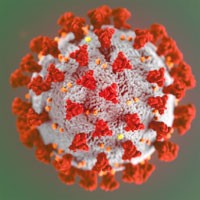
What We Do When a COVID-19 Patient Needs an Operation
We wish to share the protocol that we use in our hospital in preparing an operating room (OR) for confirmed or suspected COVID-19 patients coming for surgery. An OR with a negative pressure environment located at a corner... read more
CMSS Statement on Restrictions to Slow the COVID-19 Pandemic
Dear President Trump, Vice President Pence, and Ambassador Birx: Thank you for actively engaging the health care community—particularly the nation's physicians and the organizations that represent them—in addressing... read more
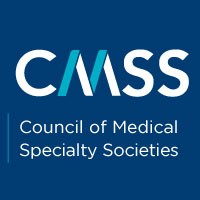
Personal Protective Equipment (PPE) for Clinicians
The Association of Anaesthetists, the Royal College of Anaesthetists, the Intensive Care Society and the Faculty of Intensive Care Medicine are aware of their members' significant concerns about their own health and that... read more
